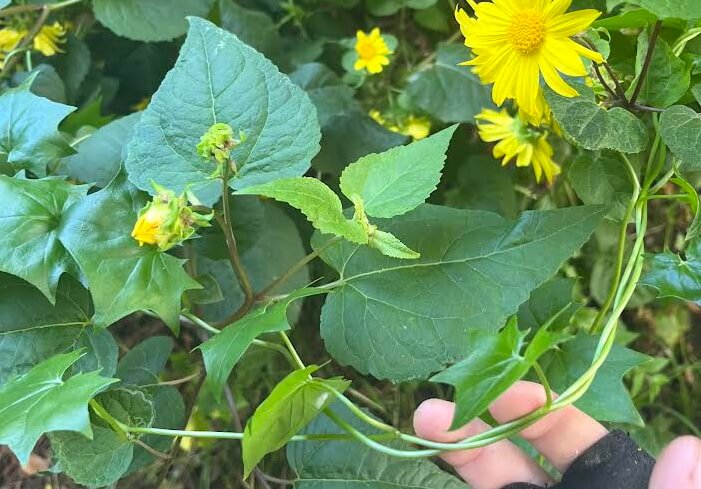The Invasive Plant Was Introduced to the U.S. As an Ornamental Vine in the Late 1800s
Recent photos show instances of Cape Ivy, an invasive and difficult-to-remove plant species common to Golden State’s coastal range, strewn along the Temescal Canyon Trail within Temescal Gateway Park.
“On the Temescal Canyon hike, there are loads of cape ivy scattered across.” said the reader who sent three photos to Mirror Media Group in a July email. “[It] is an invasive species and is literally choking out the other native plants on the hike.”
Delairea odorata, more commonly known as Cape Ivy, is a perennial vine found in the San Gabriel Mountains and along the California coast, as per the California Invasive Plant Council. Although it can also invade inland riparian areas, moist forests, and oak woodlands, the species is particularly problematic in coastal riparian areas (vegetated ecosystems adjacent to coastal water bodies).
The invasive plant was introduced to the U.S. as an ornamental vine in the late 1800s, according to California State Parks. After escaping into the wild, it has since infested coastal areas from California to Oregon.
“Vines are known to form dense mats of vegetation over trees and shrubs, killing plants underneath.” as stated on CIPC’s website. “It is toxic to animals and fish can be killed when plant materials are soaking in waterways. Stem, rhizome and stolon fragments resprout if left in the ground after treatment. Can occasionally reproduce by seeds in some areas.”
In 2021, California State Parks initiated an effort in the San Luis Obispo Coast District to remove the tenaciously grown species from the Chorro Willows area of Morro Bay State Park. While initial treatments consisted of herbicide application, newer cape ivy populations were controlled by “chemical or mechanical means.”
Representatives from the Mountains Recreation and Conservation Authority did not immediately respond to inquiry on the plant’s presence at TGP.

























